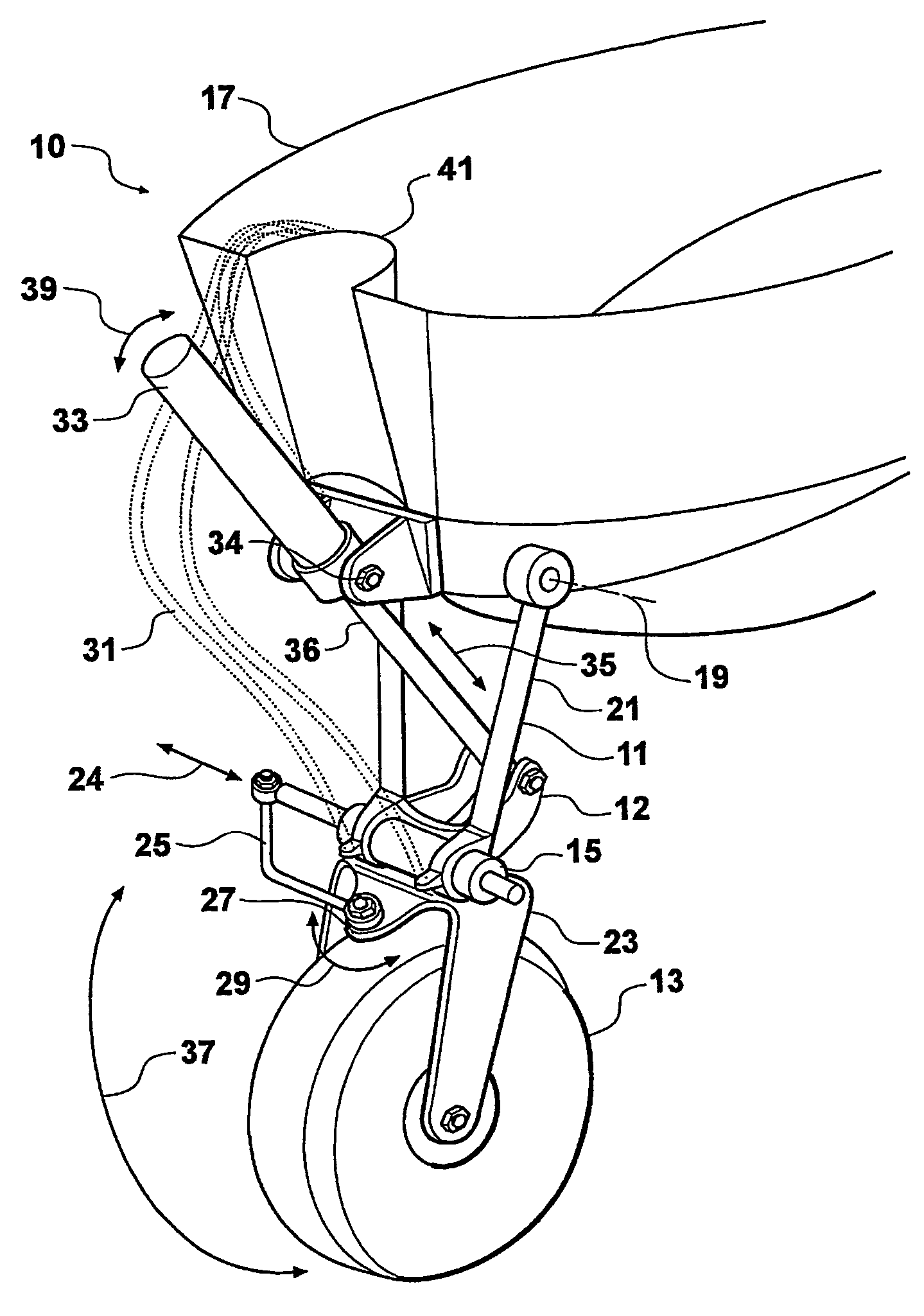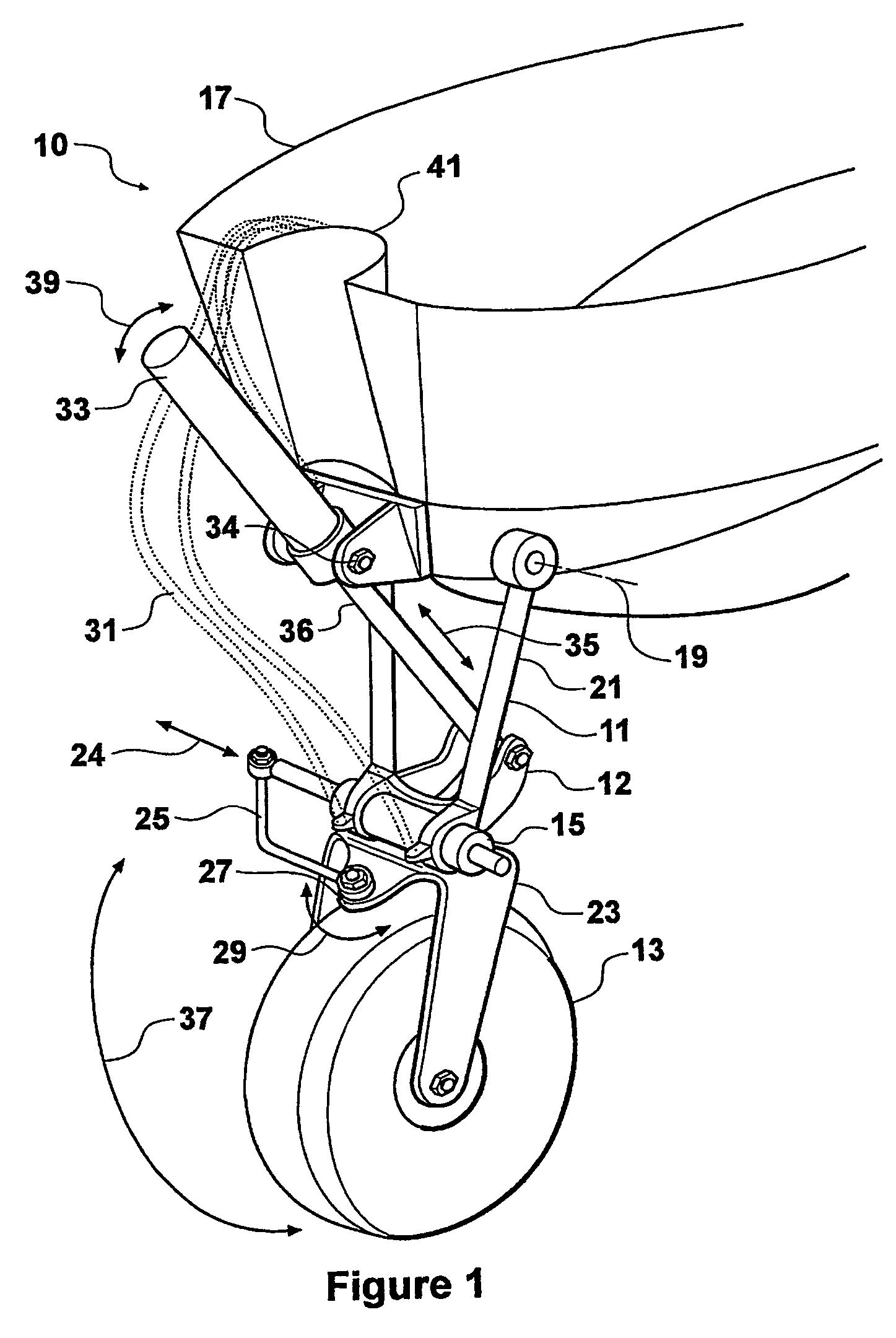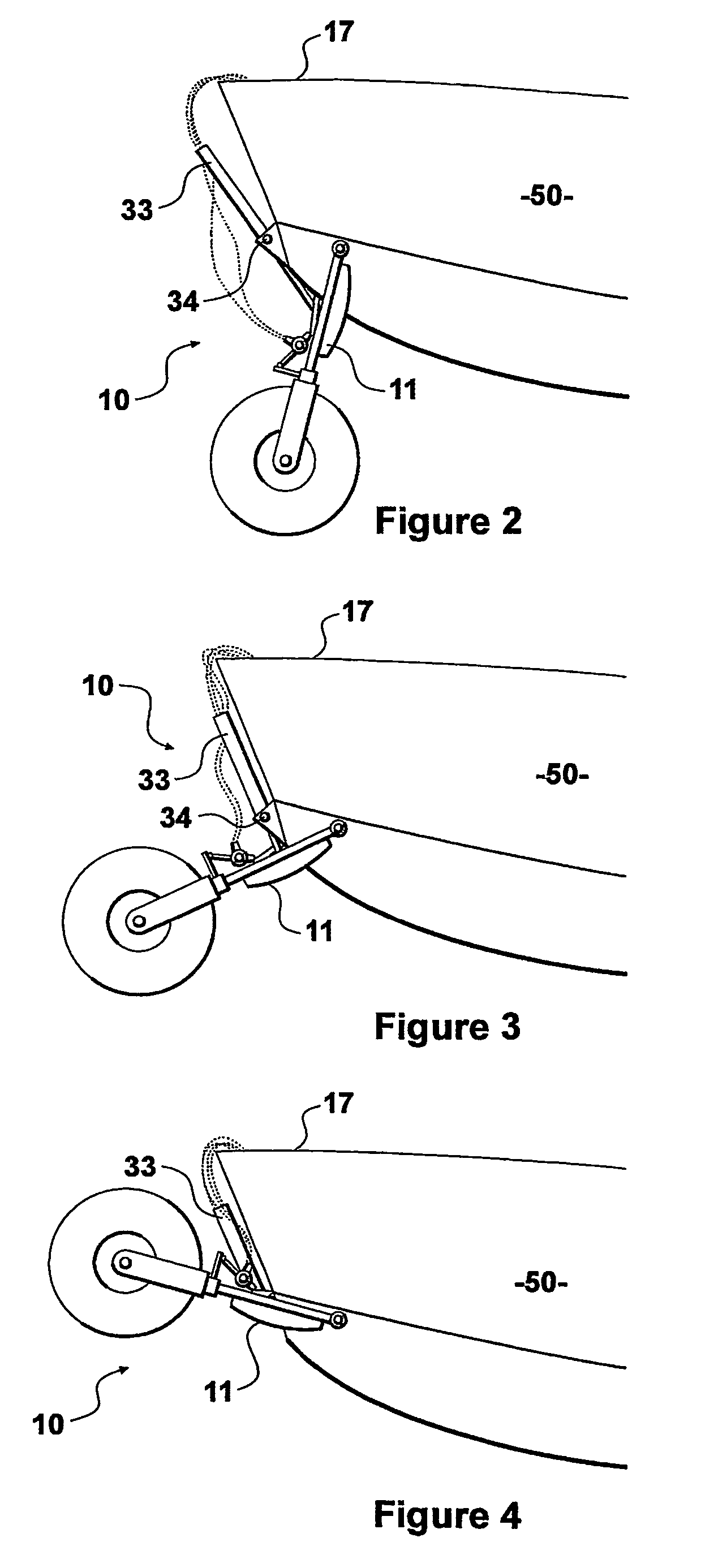Retractable leg assembly for amphibious vehicle
a technology for amphibious vehicles and legs, applied in the direction of item transportation vehicles, vehicle carriers, floating buildings, etc., can solve the problems of inability of vehicles to retract or extend their wheels, inability to achieve the effect of reducing operator workload and reducing steering system complexity
- Summary
- Abstract
- Description
- Claims
- Application Information
AI Technical Summary
Benefits of technology
Problems solved by technology
Method used
Image
Examples
example 1
[0050]With reference to FIG. 1, a first example of a steerable and retractable leg assembly (10) is shown comprising a leg (11), a wheel (13) and a steering actuator (15). The leg (11) is shown pivotally mounted to the hull (17) of an amphibious vehicle via bearings (not shown) mounted in the hull (17) arranged about axis (19). In this example a shaft extends from one side of the hull (17) to the other, and the leg is supported by two bearings, one mounted within each side of the hull (17).
[0051]In the preferred form the axis (19) is above the waterline of the amphibious vehicle.
[0052]The leg (11) comprises a substantially triangular shaped upper frame assembly (21) and a yoke assembly (23). The yoke assembly (23) is pivotally mounted to the upper frame assembly (21) to allow steering of the wheel (13). To effect controlled steering of the wheel (13), the steering actuator (15) is provided. The steering actuator (15) is mounted onto the upper frame assembly (21) and acts via a conne...
example 2
[0065]With reference to FIG. 7, a second example of a steerable and retractable leg assembly (100) is shown comprising a leg (11), an adapter fitting (113), a retract actuator (115) and a steering actuator (117). The leg assembly (100) can be mounted to the hull of an amphibious vehicle by bolting the adapter fitting (113) to the hull of the vehicle. The retract actuator (115) is adapted to move the leg (111) through an arc of movement from a retracted position to an extended position and in the return direction. The leg (111) moves through an arc of just over 120 degrees when moving from the retracted position to the extended position.
[0066]Such a range of movement is advantageous in this application since the leg (111) must be oriented close to vertical when in the extended position to provide adequate ground clearance for an amphibious vehicle to which it is attached, and yet the leg (111) must be oriented well above a horizontal attitude when in the retracted position to keep it...
PUM
 Login to View More
Login to View More Abstract
Description
Claims
Application Information
 Login to View More
Login to View More - R&D
- Intellectual Property
- Life Sciences
- Materials
- Tech Scout
- Unparalleled Data Quality
- Higher Quality Content
- 60% Fewer Hallucinations
Browse by: Latest US Patents, China's latest patents, Technical Efficacy Thesaurus, Application Domain, Technology Topic, Popular Technical Reports.
© 2025 PatSnap. All rights reserved.Legal|Privacy policy|Modern Slavery Act Transparency Statement|Sitemap|About US| Contact US: help@patsnap.com



